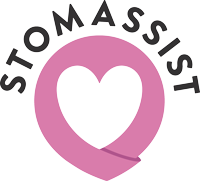
Living with an ostomy can be a significant adjustment, but you don’t have to navigate it alone. Connecting with an ostomy nurse, specifically a Wound, Ostomy, and Continence (WOC) nurse, can provide you with the support and guidance you need. In this post, we will discuss what to expect when working with a WOC nurse and how to access essential support services, including those offered by the United Ostomy Associations of America (UOAA) Ostomy Clinic.
Who Are WOC Nurses?
Wound, Ostomy, and Continence (WOC) nurses are specialized healthcare professionals trained to care for patients with ostomies. They have extensive knowledge and experience in managing the physical and emotional aspects of living with an ostomy, ensuring that patients receive comprehensive care.
What to Expect When Connecting with a WOC Nurse
1. Initial Consultation
The initial meeting with a WOC nurse often involves a detailed assessment of your health history, the type of ostomy surgery you have undergone, and your current health status. The nurse will also discuss your lifestyle and any specific concerns or questions you may have.
2. Personalized Care Plan
Based on the initial assessment, the WOC nurse will create a personalized care plan tailored to your needs. This plan may include recommendations for ostomy supplies, dietary advice, skin care routines, and strategies to manage potential complications.
3. Education and Training
A significant part of the WOC nurse’s role is to educate you on how to care for your ostomy. This includes hands-on training on how to change your ostomy pouch, manage the stoma, and recognize signs of infection or other issues. They will also provide tips for maintaining your quality of life, such as clothing choices and physical activity.
4. Emotional Support
Living with an ostomy can be emotionally challenging. WOC nurses are trained to offer emotional support and counseling, helping you adjust to the changes and connect with support groups or counseling services if needed.
5. Ongoing Follow-Up
Regular follow-up appointments with a WOC nurse are crucial for monitoring your progress and addressing any new concerns that may arise. These follow-ups ensure that your care plan is updated and effective.
How to Access Support
1. UOAA Ostomy Clinic
The United Ostomy Associations of America (UOAA) provides valuable resources through their Ostomy Clinic. This clinic offers free services to anyone with an ostomy, including consultations with WOC nurses, educational resources, and support groups. The UOAA Ostomy Clinic can be a vital resource for those seeking expert advice and community support. You can learn more and schedule a consultation by visiting UOAA Ostomy Clinic.
2. Finding a Local WOC Nurse
You can find a WOC nurse through your healthcare provider, local hospitals, or by searching the Wound, Ostomy, and Continence Nurses Society (WOCN) directory. Many WOC nurses offer telehealth services, making it easier to access care regardless of your location.
3. Joining Support Groups
Support groups, both in-person and online, provide a community where you can share experiences, ask questions, and gain insights from others living with an ostomy. The UOAA offers various support group options that can be accessed through their website.
4. Utilizing Online Resources
There are numerous online resources available for ostomy patients, including forums, educational videos, and articles. Websites like the UOAA and the WOCN Society offer extensive information that can help you manage your ostomy and connect with professional support.
Conclusion
Connecting with a WOC nurse can significantly enhance your quality of life after an ostomy. These specialized nurses provide essential medical care, education, and emotional support, ensuring you have the tools and knowledge to manage your ostomy confidently. By utilizing resources like the UOAA Ostomy Clinic and other support networks, you can access the comprehensive support you need to thrive.
Remember, you are not alone on this journey. With the right support, you can lead a fulfilling life with an ostomy.
